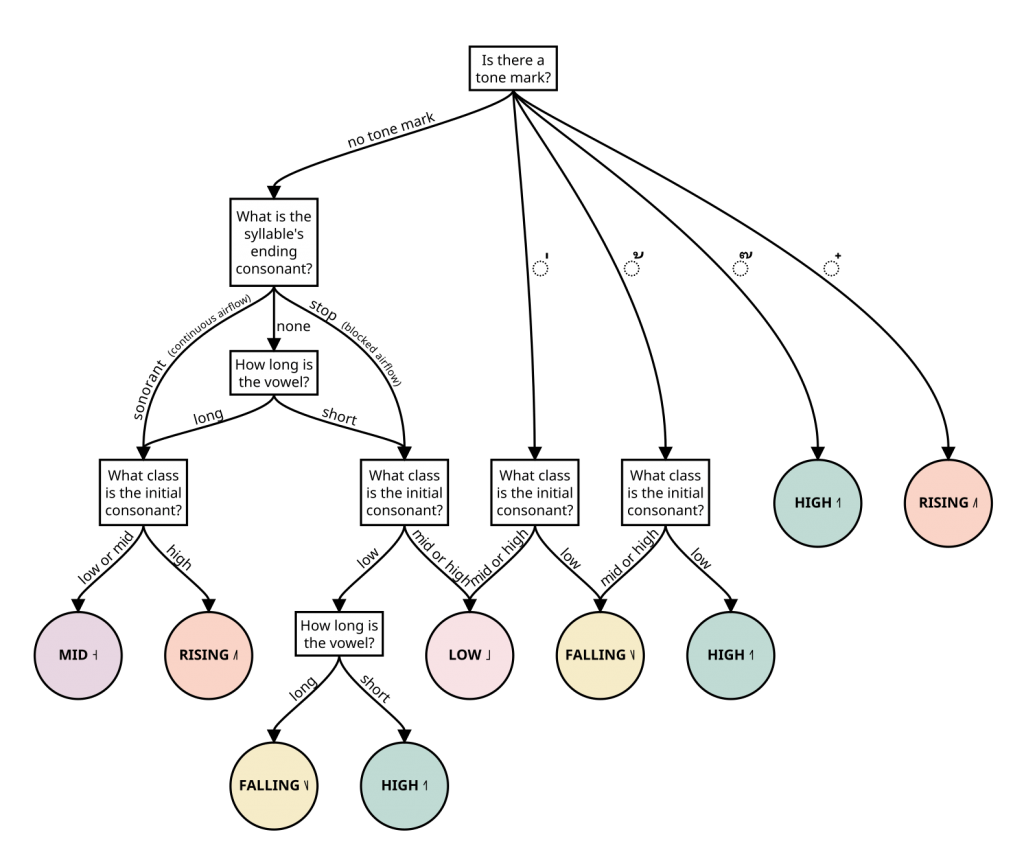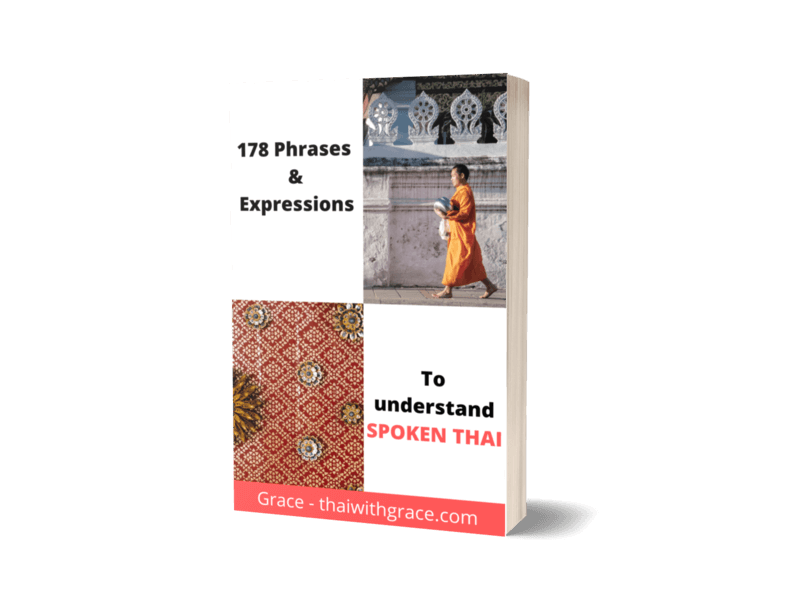Starting to learn Thai might seem like a very daunting task. You have to learn 44 new consonants, you have to learn different vowels, you have to learn about tones.
However, you should not learn that scare you! In this post, I will explain why Thai isn’t as hard as you think and why actually many parts are even easier than you think.
You won’t need to memorize charts with conjugations or special grammar points. You won’t encounter words that don’t sound like they are spelled. You won’t have to learn a new word order. And also many words you can guess from knowing its components.
Grammar
Let’s start with Grammar. Thai has a relatively simple grammar to learn. You’ll find that it’s way more simple than English grammar. Unlike other languages (French, Spanish, English, etc), there is no table of conjugations you need to learn for verbs.
No Verb Tenses
Thai has a very easy way to specify tense. Unlike English where you have to change the verb depending on the tense, with Thai you will never change the verb. All you do in Thai is use an extra word that indicates the tense.
Take a look at the following examples (and notice how in English the verb changes)
- I am sleeping: ฉันกำลังนอน (chăn gam-lang non)
- I will sleep: ฉันจะนอน (chăn jà non)
- I slept: ฉันนอนแล้ว (chăn non láew)
As you can see the word for sleep นอน (non) never changes in Thai. In English it changes (sleep, sleeping, slept). The trick for specifying when something happens in Thai is to look at the context and remember the following:
| Past | แล้ว (láew) |
| Present | กำลัง or อยู่ (gam-lang or yòo) |
| Future | จะ (jà) |
No Verb conjugations
Let’s look at another example with the verb “to be”
- She is a good person เค้าเป็นคนดี (pûak kăo bpen kon dee)
- They are good people พวกเขาเป็นคนดี (pûak kăo bpen kon dee)
- I am a good person ผมเป็นคนดี (pŏm bpen kon dee)
As you can see in English it can be either is, are, am (and more) but in Thai it is always เป็น (bpen).
A final example:
In English, you might need to add an ‘s’ add the end of the verbs (he reads, I read). In Thai ‘read’ would always just be อ่าน (àan).
As you can see the verb will never change. The gender, number of people, tense, etc, have no effect on the verb.
No singular or Plural Nouns
Another easy aspect of Thai is there are no singular or plural nouns. The noun will always remain the same.
Take English where you might have
a knife
the knives
In Thai “knife” will always be มีด (mêet) no matter what. If there is more than one you can use a classifier. For example, many knives would be มีดหลายเล่ม. 3 knives would be มีดสามเล่ม. As you can see the word for knife มีด never changes.
Classifiers can actually be a tricky subject for beginners but you can get away with just knowing a few important ones. Please read our article on Thai Classifiers to see the most commonly used ones.
Reading
Reading Thai is actually not as hard as you may think. . The big challenge here is learning all the letters and the Tone Rules. However, there are actually many shortcuts that I found when I first started to learn Thai. A lot of them are explained by Benny in this article.
Refer to the below flow chart for the entire process which I found very useful:

Another reason reading is not that difficult is that Thai is phonetic (it reads like it sounds). Unlike English, where 1 word might be pronounced 2 different ways. For example, the word for read. I read books, I read a book, the read in both those sentences are pronounced differently. Thai does not have this problem. You will never have to think if there is another way of pronouncing a letter.
Word Order
Another way Thai is easy is that it uses the same SVO word order like English. SVO is subject, verb , object. In English, you would say “I sleep on the bed”. In Thai it is the same thing ฉันนอนบนเตียง (chăn = I, non = sleep, bon = on, dtiang = bed). If you were learning another language like Korean you would need to learn a different order, for example, “I bed sleep”.
Easy to form words
Another way Thai isn’t so difficult is that you can make lots of new words from words you already know. This is because a lot of Thai words are combinations of words.
For example, if you know the word ถุง (bag) and มือ (hand) (bag and hand) then if you hear the word ถุงมือ (tŭng meu) you can guess it means “gloves”.
If you know the word หู (ear) and ฟัง (listen) you might deduce that หูฟัง (hŏo fang) means headphones
If you know the word หา (to search for) and ยาก (hard) you can deduce หายาก (hăa yâak) means “rare”.
Summary
Learning Thai (like learning any other language) will definitely require hard work and dedication however it is not an impossible task and in many aspects a lot of the concepts in Thai are simple.

